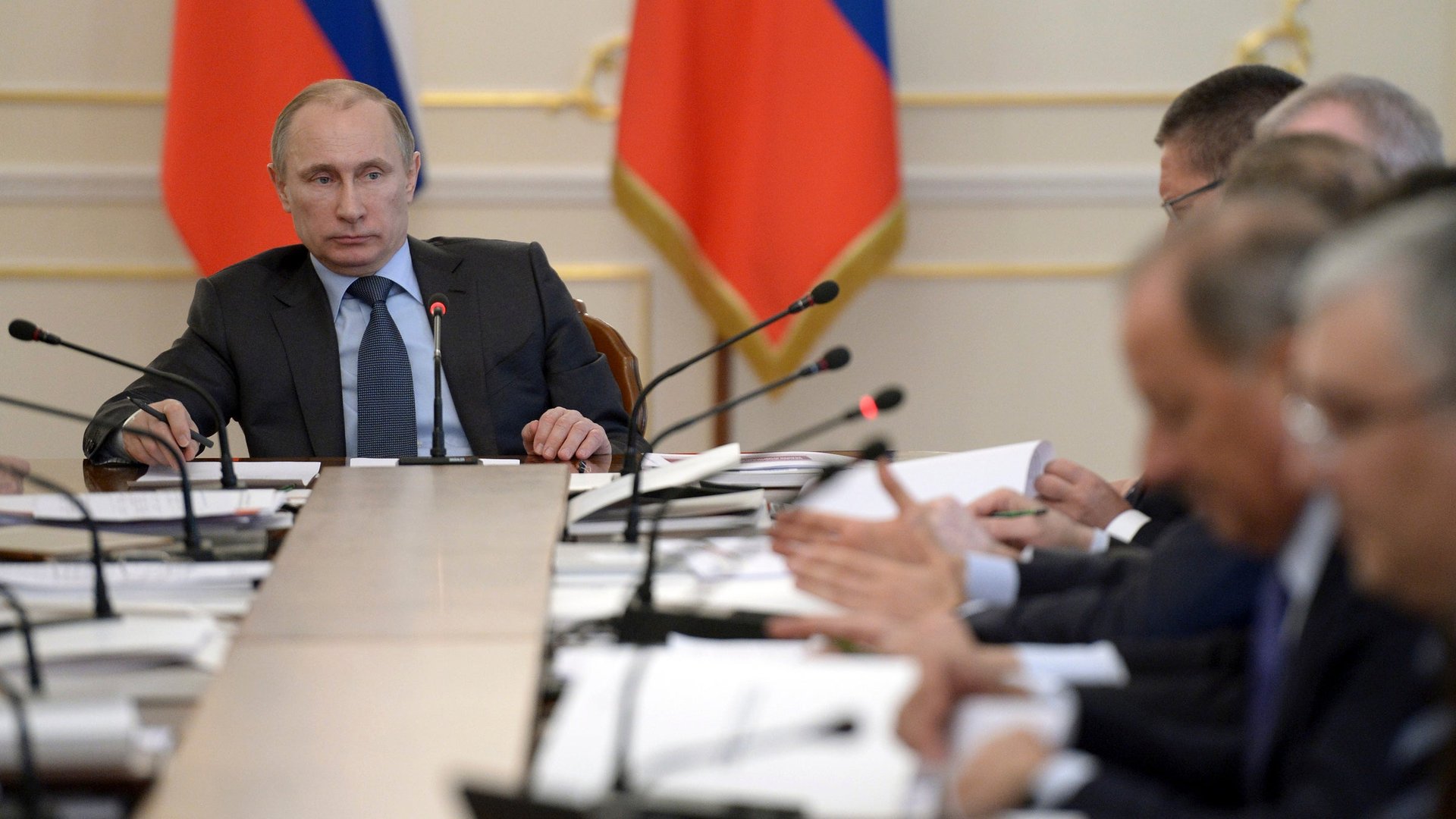Yes, Crimea is a costly proposition for Russia’s economy
To the tune of some $147 billion in new growth, according to the latest International Monetary Fund projections.


To the tune of some $147 billion in new growth, according to the latest International Monetary Fund projections.
The global finance institution released its World Economic Outlook today, and lowered its projections for Russia’s 2014 growth from 2%, as expected in January, to 1.3%, thanks to the country’s seizure of Crimea. Although foreign direct investment nearly doubled in 2013, net capital outflows from the corruption-riddled economy continued to grow. The pall resulting from state spending on conflict, limited economic sanctions and perhaps further punishment to come has capital even more reluctant about heading Moscow’s way.
We had some sense of this already, simply watching Russia’s main stock index fall 9% so far this year and the steady depreciation of the ruble against the dollar, but this is the first economy-wide assessment we’ve had since Russian troops crossed Ukraine’s border. We’ve also seen anecdotal effects of the sanctions squeeze, like the sudden sale of a Russian businessman’s stake in a Swiss trading company or Gazprom’s considering a decision to move off the dollar, which will prove costly at least in the short term. While it’s not clear who will suffer more in the event of a real gas war between Europe, which needs energy, and Russia, which needs money, it will certainly hurt the Russian economy.
This forecast is a reminder that however feckless the West looks in its diplomatic response to Russian aggression in Ukraine, the country isn’t exactly getting off scot-free. The only question is whether its leaders are willing to continue to pay the price if it keeps getting higher.